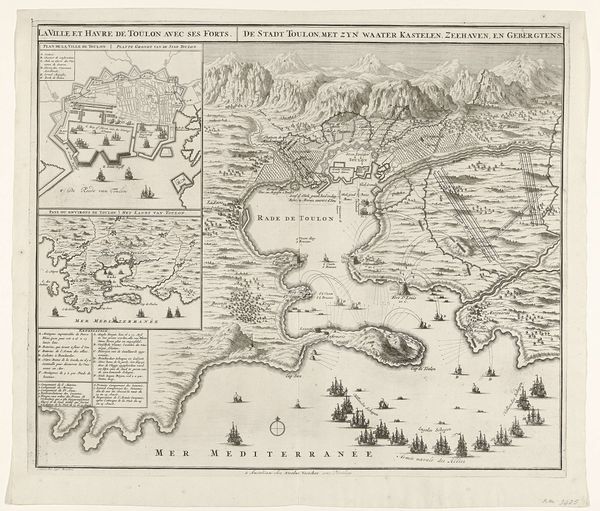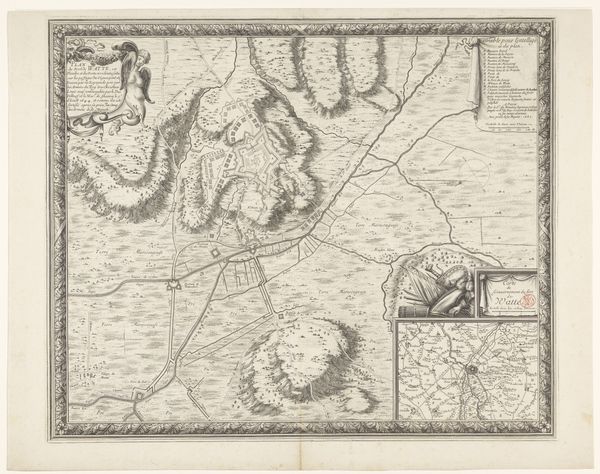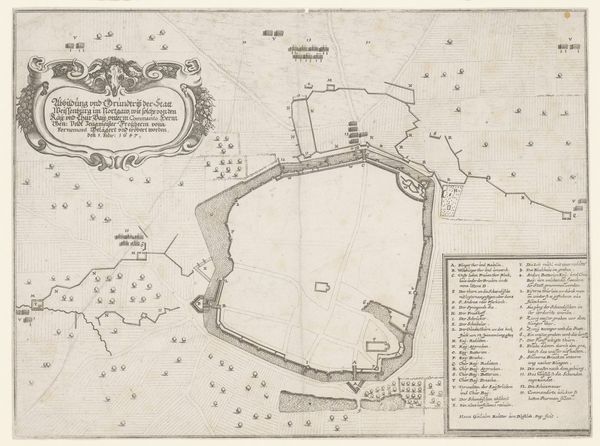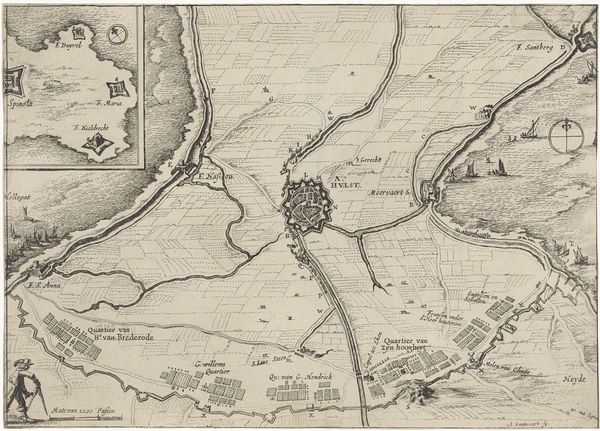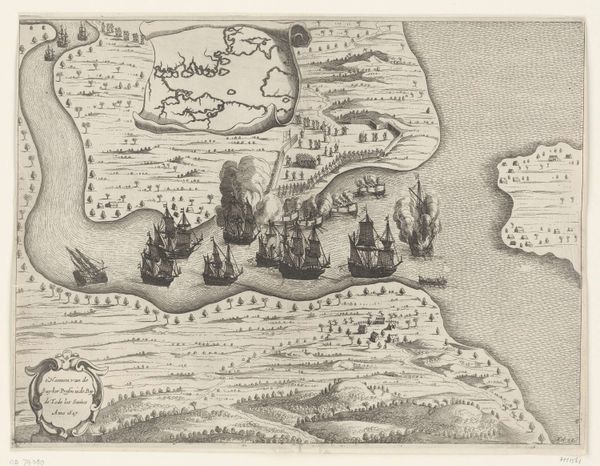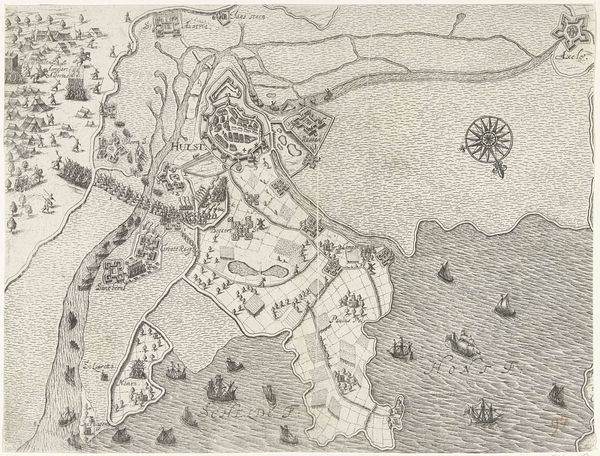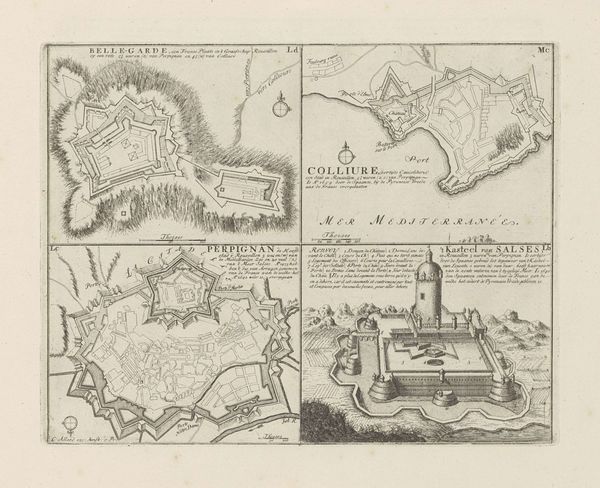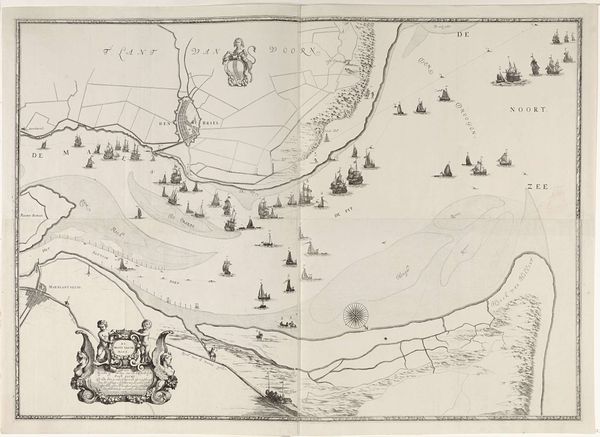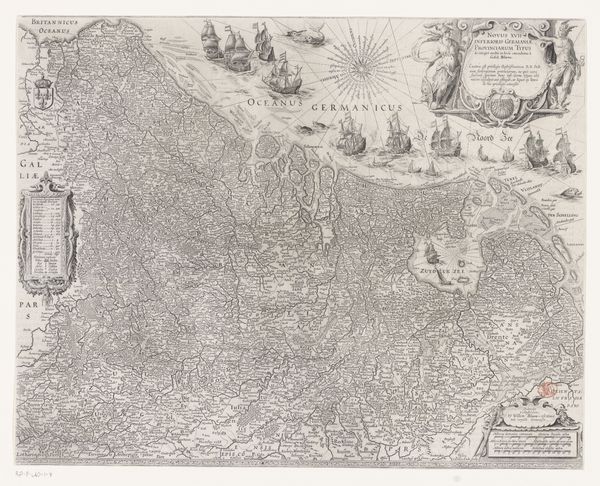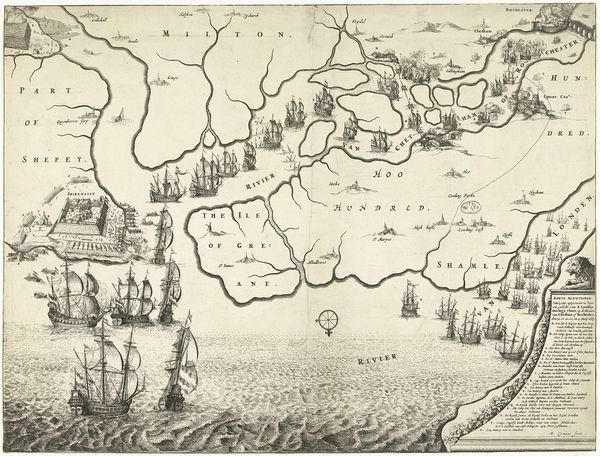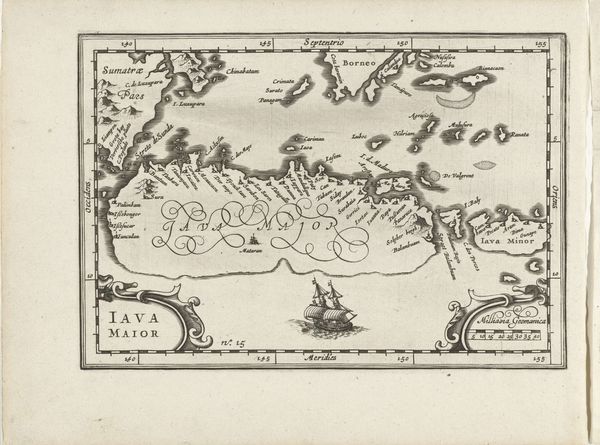
Fodina ferrea Danmorensis – A Danish Iron Mine (Aubry de La Mottraye's "Travels throughout Europe, Asia and into Part of Africa...," London, 1724, vol. II, pl. 35) 1723 - 1724
0:00
0:00
drawing, print, engraving
#
drawing
# print
#
landscape
#
history-painting
#
academic-art
#
engraving
Dimensions: sheet: 10 3/16 x 13 11/16 in. (25.8 x 34.8 cm)
Copyright: Public Domain
Curator: Here we have “Fodina ferrea Danmorensis – A Danish Iron Mine,” an engraving from Aubry de La Mottraye's “Travels throughout Europe, Asia and into Part of Africa…,” published in London between 1723 and 1724. Editor: It's remarkable how such delicate lines manage to convey such vast space. I find myself getting lost in the details, in the textures conjured from almost nothing. Curator: It offers us insight into early 18th-century industry. It represents not just a landscape, but the economic arteries of the time. Hogarth depicts a very precise surveying of resources. The print allows scholars today to think critically about landscape not only as an aesthetic exercise, but how labor reshaped land. Editor: True, though even with that understanding, it’s still visually arresting. Consider the contrasts—the rough-hewn land alongside these carefully measured markings and lines of measurement. It brings a unique dimension of understanding—it is a functional work but simultaneously an image carrying a strange emotional charge. Curator: Exactly, the combination shows both scientific rationality of that historical moment and Hogarth’s capacity to capture not just the visuals, but the broader forces acting upon society. It shows us a vital aspect of mercantile life during that era. Editor: I see your point about scientific accuracy. Take, for instance, that little wind rose in the lower center – beautiful and incredibly pragmatic. In terms of line and texture, consider the upper register, and compare its marks against the registers below; there's something so unique about that approach, so considered... Curator: Precisely! It exemplifies Hogarth’s role not only as artist, but also documentarian of burgeoning industrial modernity—the socio-economic transformations happening around him that affected the political landscape. It reflects Britain's growing commercial interest. Editor: You've certainly expanded my perspective on its importance; initially, it just pulled me in aesthetically. Curator: It’s a multi-layered visual record. Editor: Precisely. Something both to admire and to examine further.
Comments
No comments
Be the first to comment and join the conversation on the ultimate creative platform.
